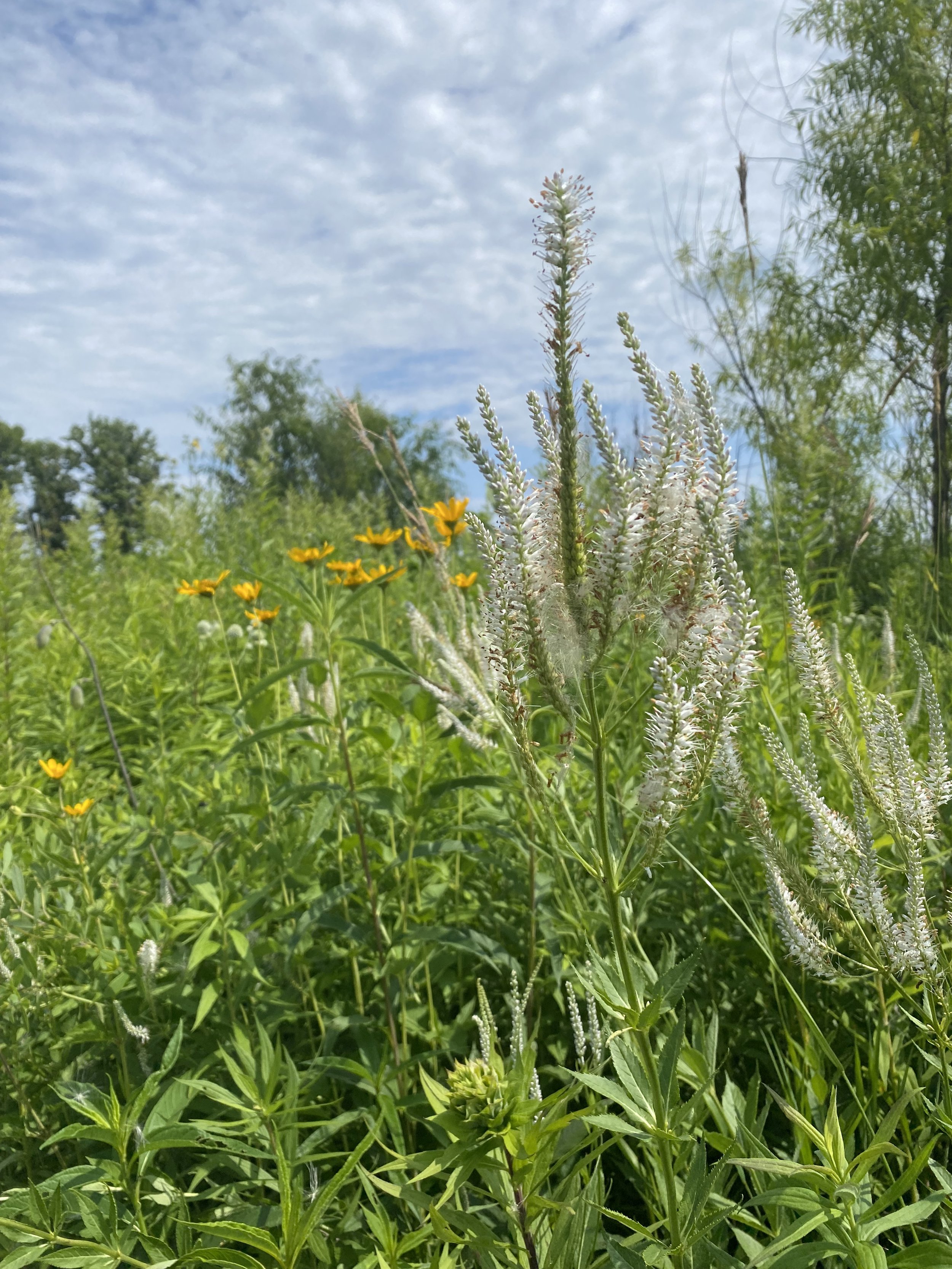There’s a feeling I get sometimes that takes my breath away. Having lived in a place for a while, the views become routine, the rhythms even become predictable. Predictable like knowing that Warbling Vireos love the big oaks and willows around Faville Marsh, and that you can always find them there in summer. But sometimes even in those familiar places, a feeling takes my breath away. On a recent day from a vantage point at the Snake Marsh, I looked across the newly acquired 80 acres and I was surprised I was able to see through Faville Marsh, all the way up to Springer Road. That new view, of the land’s undulations—long ago rippled by glaciers and rushing water, rising on the dry moraines and dipping into the soggy marshes—felt nearly whole. I could see a landscape.
Henslow’s Sparrow (photo by Arlene Koziol).
On this new property, you can stand atop its highest point and look north/northwest and west/northwest nearly a mile, with protected native habitat most of the way through. These views are great for us, but once restored will prove spellbinding for grassland birds. Eastern Meadowlarks, Dickcissels, Henslow’s Sparrows, and many more are sure to call the land home.
Of special note is the 21 acres of Faville Marsh containing a large area of open water, where you can often see Pied-billed Grebes and Green-winged Teal. On the interior of the marsh is a boggy mat filled with sphagnum mosses, sedges, arrowhead, and a diverse stand of native shrubs including leatherleaf, chokeberry, and the showstopping winterberry. When Aldo Leopold worked in this area, it was known as The Goose Pond, and we’ve since reprised the name.
Culver’s root and other blooming prairie plants (photo by Brenna Marsicek/Madison Audubon).
The land comes with stories too; that Leopold would count pheasants as his graduate students flushed them from the marsh, standing on top of that hill having turned his cane into a makeshift seat while puffing on his pipe. At that time the landscape was becoming fragmented by more intensive land use, grassland birds like Prairie Chickens were soon to become locally extinct, and the idea of restoring land was nascent. Perhaps, in those moments, what galvanized Leopold were ideas of reconnecting people (like his graduate students) with the land, and caring for land in such a way that people and wildlife could coexist. In fact, we know many of his writings are formulated around these exact ideas—his land ethic.
Today, you can see many of those ideas transformed onto the landscape from atop that same hill. The 80 acre acquisition is a significant piece of the larger puzzle that forms Faville Grove. From atop the hill, the sanctuary seems endless on foggy mornings, ten thousand pieces slotted together with little bluestem and coreopsis, blue flag iris and marsh skullcap. Whether you’re visiting for the first time or the fiftieth, that landscape might take your breath away.
Written by Drew Harry, outgoing Faville Grove Sanctuary land steward
adding a piece to the puzzle:
You can help make this landscape whole!
The new 80-acre acquisition at Faville Grove Sanctuary connects existing sanctuary lands, protecting thriving wetlands and waterways from threats caused by agricultural runoff, harmful invasive species, and herbicide drift. Nature lovers like you can help Madison Audubon put together this amazing landscape puzzle—and prepare us for future opportunities to protect more habitat for more birds and other wildlife. With each donation, we will add a piece to our puzzle image. As more donors contribute, the beautiful landscape you are helping protect will be revealed piece by piece.
Cover image: At Faville Grove Sanctuary, the sweeping green landscape view from Buddy’s Prairie overlooking Faville Marsh and the new addition in the distance. The blue sky and drifting white clouds reflect in the water of the marsh (photo by Brenna Marsicek/Madison Audubon).







